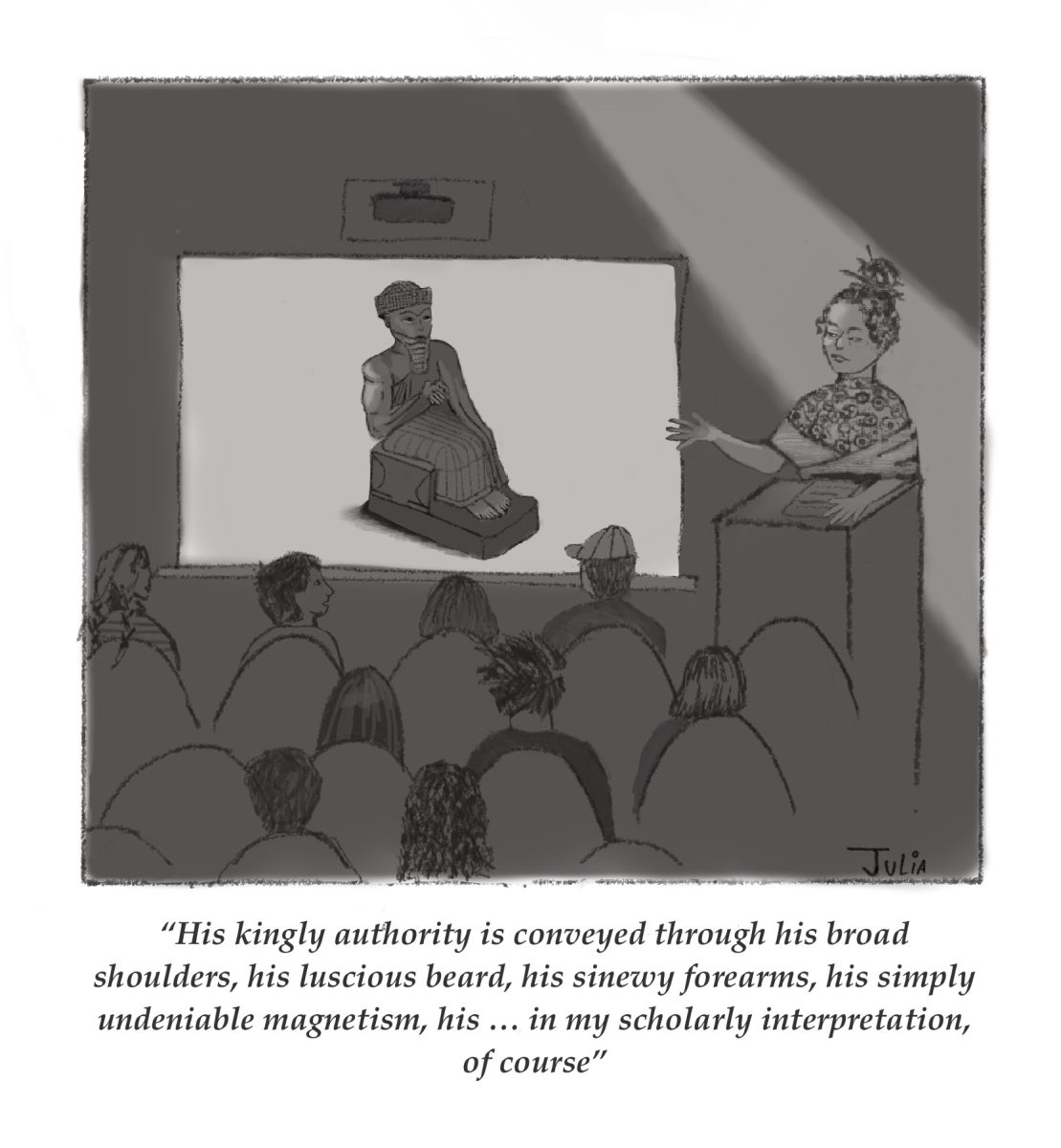Our glorious, one-block downtown serves many needs. We walk down Spring Street’s sidewalks, sit on its benches, shop its stores, and dine in its restaurants. It’s a unique opportunity in our Town to cross paths with people who aren’t students. However, Spring Street is primarily designed for cars. It does not center the pedestrian. While it tries to accommodate multiple forms of transit, it gives most of the room (and power) to cars. Spring Street could be made even better by increasing the amount of space it offers to those not in cars.
We are often told that our college years are the four best years of our lives. Other than youth, the intellectually stimulating environment, and peers with shared interests, this sentiment mainly stems from the spatial design of American colleges and universities: College is one of the most communal times of our lives. Think about where Americans normally live: suburban or car-centric neighborhoods. This kind of environment isolates people, divorcing them from the regular interactions with community members that happen every day on dense college campuses. College is a place to share space with others, but I think there is still some work to be done.
Many of us marveled at the intimate, cobblestone streets of our chosen study away locations. We walked to that one scenic view of Copenhagen, or maybe it was Amsterdam, Athens, Prague, Quito, Rome, or Stockholm. What all of these places have in common is that they exist on the human scale, not on that of cars.
American, car-centric “sprawl” came with the development of the U.S. interstate highway system in the 1950s, along with white flight and xenophobia. It’s intimately intertwined with our American culture of individualism, but that is outside the scope of this op-ed; ask your history-major friend about it (or Professor Karen Merrill). Instead, let’s get back to Spring Street.
Specifically, I am asking the Town to allow Spring Street businesses to use a number of parking spaces for outdoor dining or vending (as businesses in Amherst already do), expand the width of the sidewalks, paint more crosswalks, close off street traffic more often (for events like the farmers market and holiday parades), and add plants and trees to enhance the pedestrian experience.
These changes don’t need to be expensive: Just set out some potted plants and a table in a former parking spot, and there you have it.
This has happened before. Remember how restaurants and businesses across the country expanded onto sidewalks and into parking spaces during the COVID-19 pandemic? This increased street safety and brought vibrancy back to neighborhoods.
I am not saying all cars are bad. Certain vehicles need to access the street, like emergency response services and postal service trucks. But minimizing downtown traffic should be a priority for the Town.
Hear me — sorry, hear science — out. Research shows that people who live in walkable neighborhoods are more likely to have a strong sense of community, stress levels decrease with declining levels of car traffic, and walking is beneficial for mental health. Psychologists have found a relationship between social isolation and increased risk of early mortality. Walkable, pedestrian-oriented spaces also have immense social benefits: Former Surgeon General Vivek Murthy and New York Times columnists Ezra Klein and David Brooks (the latter during his recent talk at the College) have pointed to how America’s epidemic of loneliness has intensified political polarization and increased rates of depression.
We have plenty of communal spaces on campus, but Spring Street is unique because it is the closest off-campus space within walking distance. The businesses serve as a different setting, an escape from academic environments. We all love the quads, but little places like the tables behind Tony’s Sombrero, a high table at the Purple Pub, and a back corner in Tunnel City Coffee can give us a moment in a different landscape and change the pace of our lives. They let us share space with different people like professors, Town residents, tourists, fellow students, and the those who work at the businesses.
Urban environments require you to come into contact with others regularly. Take the New York City subway as an example. It’s democratizing, forcing you to share space with others. Unlike your own vehicle, it doesn’t allow you to isolate yourself from those who look or think differently than you. This takes a bit of grit and uncomfortable learning, but on the other side is a lot of shared understanding, something we need in this time of political polarization.
Imagine you are walking down Spring Street and you aren’t relegated to just a narrow stretch of sidewalk. You have enough room to walk more than two abreast. You see tables spread out in front of Blue Mango and Spice Root. On Saturday mornings, you see the farmer’s market spread along the street instead of being tucked away in the parking lot. You get to interact with people, but more importantly, you see other people and share a space with them. We construct our sense of place in college through friendships and memories, but the built environment strongly shapes the way we do so.
Last fall, my friend and I sat in a parking space on Spring Street as a form of tactical urbanism, a citizen-led approach to improving public spaces using low-cost, short-term, and scalable interventions. We sat in two chairs and sipped coffee. For an hour, the two of us occupied one parking spot while cars filled the rest. After an hour, we were asked by Town police to leave. “You just can’t do that,” the officer said, smiling.
Cars don’t just take up space in this country, they direct most of our lives. In rural areas, a car is a critical part of everyday mobility, but broadly speaking, most Americans depend on cars for almost everything. In 2017, 59.4 percent of all vehicle trips were less than 6 miles. This sort of dependence can be seen on Spring Street where street parking takes priority over increased greenspace or seating. Changes to our infrastructure alter our ways of living, and eventually, our norms. Maybe, one day, living in walkable communities will be a given, not only found when visiting Europe or New York City.
Of course, Williamstown is not an “urban” environment, but the case for community here is just as strong. Stop for a second and think about it: We all live within three miles of each other. College is about gathering together and sharing space. It’s about leaning on each other in times of difficulty and sharing moments of ecstasy on a crowded dance floor. Your four years here are most likely the only time you will live within walking distance of so many other people your age.
For many of us, this is a change in lifestyle, but in much of the world, dense, walkable urban living is the norm. In addition, it’s a happier, more social world out there outside of a car. Let’s share time and space with others. Even though we call ourselves a bubble, increasing the opportunity for social interactions may lead us to realize that we aren’t as similar as we think. We may disagree on some things. This is good friction, good difference. It gets us somewhere. Let’s interact, gather, make noise, take up space, and enjoy this time we get to share with so many interesting people.
Gus Demerath ’25 is a sociology major from Shreveport, La.




